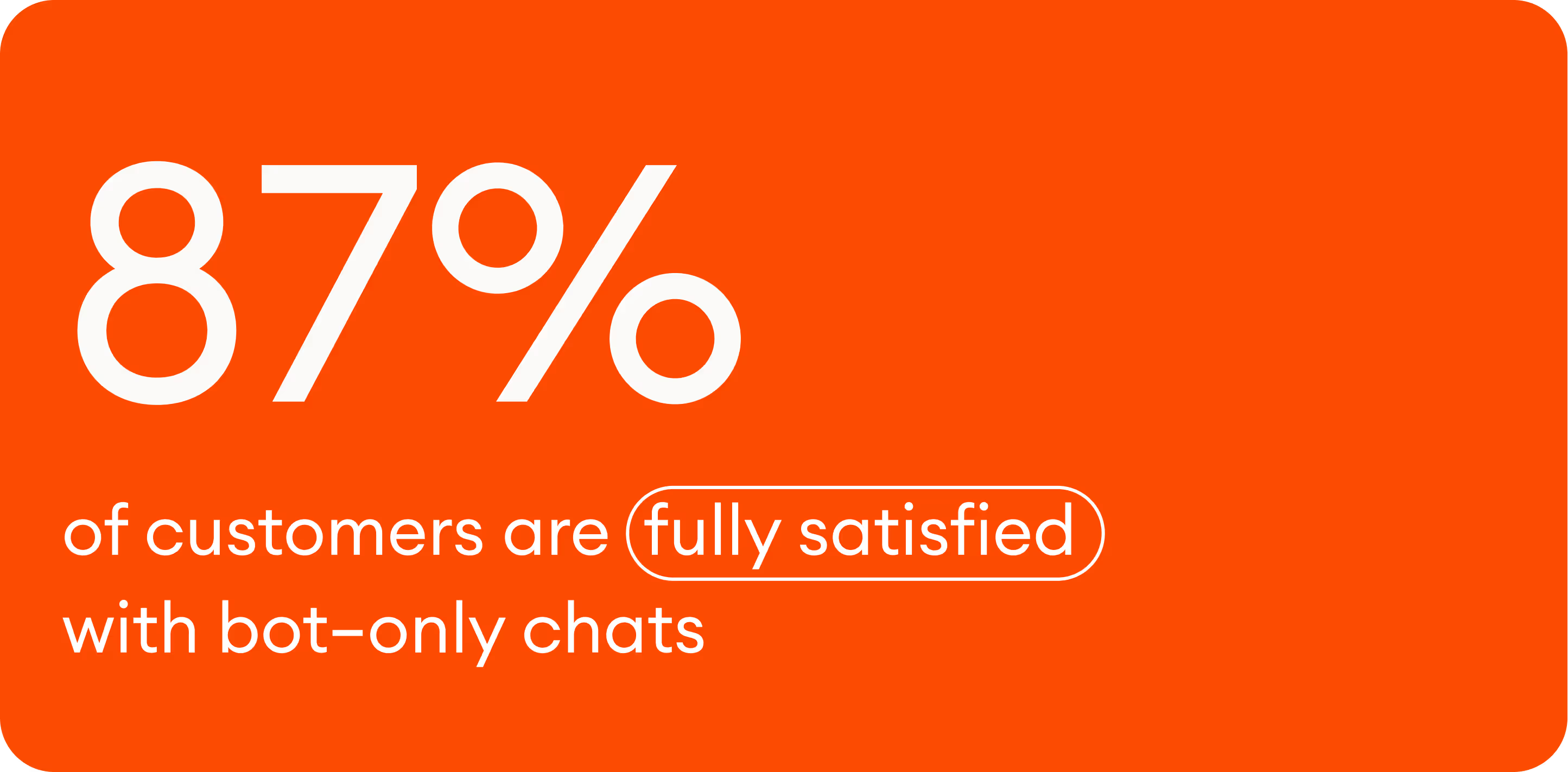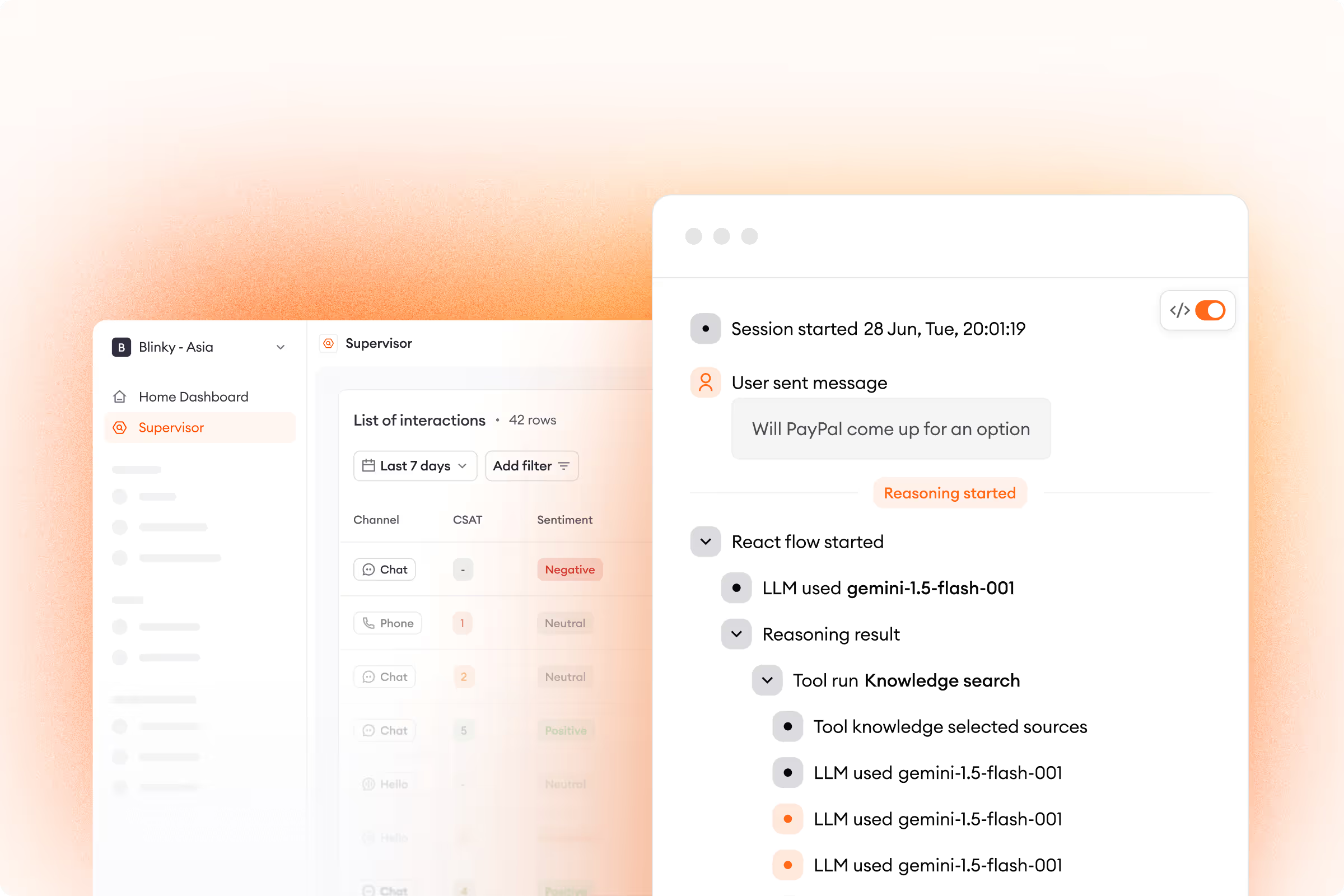With ecommerce booming, customers are having no trouble finding their favorite products online. Unfortunately, many companies are dropping the ball when it comes to digital customer experiences.
Only 11% of customers claim companies are doing an excellent job with CX. And poor experiences can be a company’s death blow — 73% of shoppers jump ship after a single negative encounter.
Positive experiences, on the other hand, can effectively convert one-time visitors into loyal repeat customers. Since attracting new customers can cost 5x more than retaining existing ones, the value of a great customer experience can’t be overstated.
The good news? Building a better customer experience isn’t a task you have to labor over by yourself. Automation technology can help businesses improve several key elements of the customer experience.
This blog post breaks down everything you need to know about customer experience automation: what it is, why it’s a game changer for your business, and how it works in practice.
Customer experience automation definition
Customer experience automation (CXA) describes any customer engagement that does not require a human agent. While there are varying degrees, at its highest level, CXA allows brands to utilize digital tools to engage with, assist, and proactively support shoppers throughout the entire customer journey.

Think of it this way: with the right set of tools, CXA can be leveraged to streamline customer interactions and deliver scalable, 24/7 support. It allows you to cut response times, improve key metrics, and deliver personalized support without expanding your team.
A successful CXA strategy includes the following components:
- Orchestration: During orchestration, you analyze customer data with artificial intelligence (AI) to see where automation helps you most. Find the touch points and conversations that make the most sense to automate.
- Segmentation: With segmentation, companies categorize customers and tickets into subgroups based on a shared characteristic. Common examples include location, language, priority, and request type. Segmentation ensures customers automatically get assigned to the correct queue or agent specialized in their specific case.
- Personalization: Personalization lets businesses give every customer unique interactions suited to their product preferences, purchase history, and more. By compiling actionable insights into each customer, you can tailor messages and automate interactions that still have a human touch.
- Proactive engagement: Businesses don’t have to wait for customers to reach out first before offering assistance. By sending proactive notifications, automation solutions let customers know help is available throughout the buying process and prevent small speed bumps from becoming major roadblocks.
- Feedback: Go one step further by learning from your customer communications. CXA tools collect and analyze customer feedback and recommend what steps to take next. This boosts efficiency and helps you spot real-time trends in what shoppers are looking for.
- Ongoing optimization: Leading automation solutions are self-learning and continuously work to be more effective. They identify new questions to automate by pinpointing which queries get asked the most and go so far as to propose answers by themselves.

Customer experience automation benefits
A customer experience strategy that embraces automation can turbocharge any ecommerce organization. Here are the top benefits CXA provides:
1. Higher customer satisfaction
Customer experience automation ramps up business productivity by enabling quick, hassle-free responses that customers love. This transformation has a near-immediate positive impact on key CX metrics, including customer satisfaction (CSAT) and NPS scores. The delight automation creates has a wide ripple effect: retention rates rise, churn rates fall, and customer lifetime value (CLV) grows.
2. Reduced costs
With AI-powered automation taking on your most time-consuming customer service tasks, human agents can efficiently handle specialized cases. CXA can streamline your workflows, making it easy to keep operational costs in check. Cost per ticket shrinks, and there’s no need to hire additional reps as your business grows.
3. 24/7 global availability
CX automation solutions ensure customers can get assistance anytime, in any time zone — even when your agents aren’t working. Thanks to CXA, businesses can make themselves available to a global audience without growing a large multinational team.
4. Effortless scalability
Automation lets brands instantly scale their superior customer experience to any number of customers. Instead of taking on the costly and unsustainable task of manually handling each shopper’s unique experience, brands can replicate all sorts of interactions to reach a broader customer base.
5. Access to actionable insights
By tracking what customers are satisfied and dissatisfied with, AI can simplify the process of requesting, collecting, and analyzing customer feedback. And once you know what customers are saying, you’ll be better equipped to lean into your strengths while addressing weaknesses. Automation solutions even suggest improvements based on customer pain points, helping organizations make data-driven decisions.
6. Personalized experiences
CXA unlocks a business’s ability to personalize customer interactions. AI tools can address customers by name, offer exclusive discounts, recommend relevant products, and more. By presenting buyers with content curated specifically for them, automation solutions enhance the customer experience and allow each customer to get VIP treatment.
7. Consistent, omnichannel support
Customer experience automation tools make it simpler for businesses to sync up their messaging across all support channels, letting companies deliver consistent experiences wherever customers contact them. Supported by CXA solutions, teams can offer omnichannel service — across chat, email, social media, and so on— that’s on-brand and free of human errors.
8. Greater revenue potential
Customer experience automation can help businesses drive more sales through customer support. CXA tools track customers' browsing history and shopping preferences to suggest items they’re most likely to buy. These solutions are also capable of promoting complementary products during check-out to raise average order value (AOV) and, ultimately, generate higher revenue.
9. An enhanced agent experience
CX automation goes a long way in relieving the pressure felt by support agents. 74% of contact center representatives are at risk of burnout, and automation is one of the most effective ways to lower stress levels in the workplace. With AI software resolving 70%+ of customer tickets and several repetitive tasks, agents see a much more manageable workload.
Explore how automation helps brands deliver exceptional online experiences in our ebook, The Customer Service Automation Handbook for Online Businesses.
How do you automate the customer experience?
There are a number of available solutions out there to achieve outstanding customer experience automation and create engaging, positive experiences that meet customer expectations.
While this is not something that can happen overnight — automation should continue to evolve based on your customers' needs — ecommerce brands can start with the following tools:
1. AI chatbots
An AI chatbot is one of the most effective ways to automate customer experiences. Boasting a satisfaction rate of 87%, higher than any other channel, chatbots can unlock your efficiency by fully automating your most repetitive questions and giving representative breathing room to oversee more urgent cases.

AI bots can take CXA to another level by plugging into your inbox and handling tasks like:
- Routing customers to agents they’ve had before
- Prioritizing urgent chats to ensure they get addressed first
- Displaying analytics for agents and managers to monitor quality
AI chatbots don’t just send automated messages. Their ability to automate the entire customer experience highlights their value throughout the customer journey.
2. Ticket routing
When chatbots can’t resolve a case, customer experience automation tools ensure customers still get answers efficiently by routing tickets to the most appropriate agent. Behind the scenes, these solutions also save reps time. Tickets automatically get assigned to agents, meaning time doesn’t get wasted trying to hunt down customer queries. AI automation platforms link customers to live agents to guarantee tickets get addressed by the right person as swiftly as possible.
3. Self-service
81% of customers want more self-service options, and CXA can empower them to resolve a growing number of cases on their own. Automation platforms, for example, can detect if a visitor appears stuck on your website and proactively get them to the correct FAQ or product page. By keeping track of customers in the background, AI tools can guide shoppers to answers throughout the self-service process.
Optimize your customer experience with AI-backed automation
If shoppers are finding your customer experience underwhelming, automation’s transformative power may be just what your brand needs. Customer experience automation demonstrably improves satisfaction across the customer lifecycle — and it’s not that hard to get going.
Zowie is an AI automation platform that delights customers and drives efficient service experiences.

.avif)







